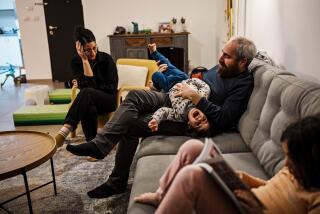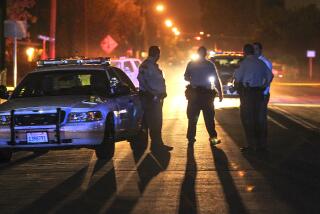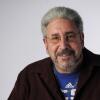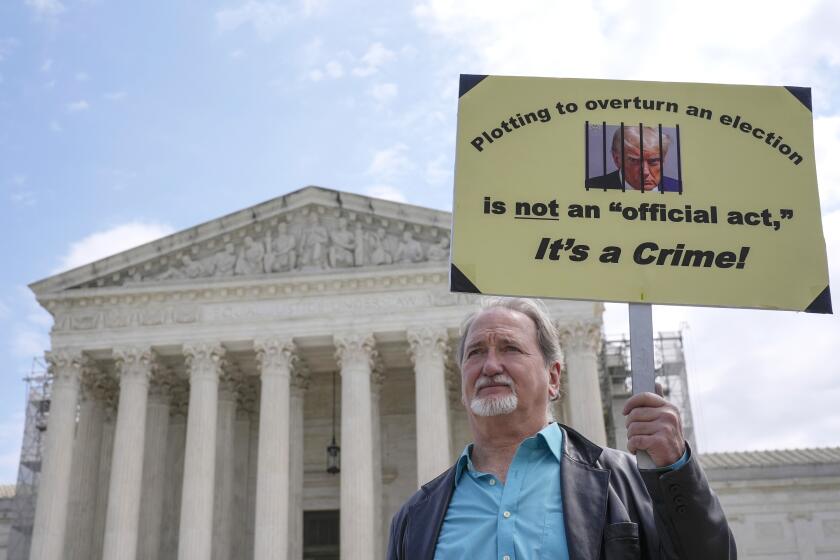New report on Newtown shooter: Parental denial, breakdowns, missed opportunities
In February 2007, Yale clinicians identified in Adam Lanza what they believed were profound emotional disabilities and offered him treatment that could give him relief for the first time in his troubled life.
But Adam was angry and anxious, and he didn’t want to go. His mother, Nancy Lanza, constantly placating her son, was inclined to pull away from the treatment, prompting a psychiatric nurse to reach out to his father, Peter Lanza, in an urgent email.
“I told Adam he has a biological disorder that can be helped with medication. I told him what the medicines are and why they can work. I told him he’s living in a box right now and the box will only get smaller over time if he doesn’t get some treatment.”
Nancy Lanza rejected the Yale doctors’ plan. Adam was 14.
Six years later, Adam, now an emaciated recluse and fixated with mass killers, murdered his mother and massacred 20 children and six educators before turning a gun on himself at the elementary school he once attended in the Sandy Hook section of Newtown.
A report released today by the Office of the Child Advocate pointed to the Yale episode as one of dozens of red flags, squandered opportunities, blatant family denial and disturbing failures by pediatricians, educators and mental health professionals to see a complete picture of Adam Lanza’s “crippling” social and emotional disabilities.
While the report does not draw a line between the events in Adam Lanza’s young life and the massacre, it points out repeated examples where the profound anxiety and rage simmering inside Lanza was not explored in favor of attempts to manage his symptoms.
For example, at the apex of Adam’s increasing phobias and problems coping with middle school, he went to a pediatrician and was repeatedly prescribed a lotion to soothe hands rubbed raw by excessive washing and a laxative to ease constipation brought on by a dangerous loss of weight. Yet, the authors note that there was no effort during these visits to address the underlying causes. A visit to a hospital emergency room was cut short before there was a chance for clinicians to explore Adam’s problems at greater depth and schedule him for long-term treatment because Nancy Lanza said that being at the hospital was making Adam anxious.
“This shooting could have been stopped at any point along the trajectory of (Adam Lanza’s) life,” said Scarlett Lewis, whose son Jesse was one of the first-graders killed in classrooms in the Sandy Hook School.
“Red flags were evident, yet procedures were not in place to effectively deal with the issues. This is a systemic concern,” Lewis said.
Lewis has started a foundation in her son’s honor called the Jesse Lewis Choose Love Foundation to create and promote social and emotional learning programs for school-aged children.
“This is the direction our education system must take in order to continue to offer our children a safe and secure environment in which to learn and to produce well-rounded, well-adjusted children,” Lewis said.
The child advocate’s mandate was to scour Adam Lanza’s life for warning signs, lapses and communication breakdowns that could lead to reform in Connecticut’s school and mental health systems. The report’s authors offer dozens of recommendations that they hope will make children and families safer and mental health treatment more effective. Thousands of pages of records were subpoenaed in the 22-month probe, which included consulting with experts ranging from FBI profilers to child psychiatrists.
The 112-page report reserves some of its most searing criticism for what the authors see as efforts by his parents and school personnel to control his superficial symptoms and appease him to “get through the day” rather than having specialists treat his serious conditions.
At times, the report said, school officials in Newtown failed to comply with legal requirements in their handling of Adam. They also point to a chronic lack of communication and coordination among the various players involved with Adam’s education and treatment, inside and outside of Newtown.
“The lack of sustained, expert-driven and well-coordinated mental health treatment, and medical and educational planning, ultimately enabled his progressive deterioration,” the report said.
Among the troubling omissions cited in the report, the authors reveal that Adam never underwent a neurological examination despite reported seizures and a diagnosis of obsessive compulsive disorder and depression. Adam was repeatedly pulled from special education programs, therapy and schools at various times and was in the state’s little-known homebound program with minimal oversight by school officials.
Even Adam’s own stunningly violent and graphic school writings about homicide, gunplay and war, including a comic book called, “The Big Book Of Granny” and seventh-grade war essays, failed to trigger psychiatric treatment.
The report also traces his descent after high school into a stew of depression, isolation and suicidal thoughts, spending months in his bedroom with blacked-out windows, communicating in cyberspace with fellow connoisseurs of mass murder.
He also spent those days planning the attack on Sandy Hook Elementary School, which he may have chosen because he could overpower the children and anticipated little resistance. The report said Adam visited the school’s website “on numerous occasions” and studied the school’s security procedures.
“The attack on Sandy Hook Elementary appears to have been a purposefully thought-out and planned attack. [Adam Lanza] did not just ‘snap,’” wrote Sarah Eagan, the state Child Advocate; Faith Vos Winkel, the office’s principal child fatality investigator, and other authors of the report.
The authors acknowledge that the report does not delve into the issue of high-capacity assault weapons but said that Adam Lanza’s access to guns, which began at age 5, had a role in the tragedy along with his deteriorating mental and physical health and his increased isolation.
Joseph V. Erardi, Jr., Newtown’s superintendent of schools, said his thoughts after reading the child advocate’s report were with “the victims’ parents and the families who live every day with this horrific tragedy. In addition, my initial reflection includes the hundreds of students, staff, parents, first responders and community members who witnessed and experienced 12/14.
“When a report like this is brought forward,” Erardi said, “I only wish there was a way to assist those who suffer every day…..my heart is with our victims’ parents and all those connected to this tragedy.”
He said that “if there is one school leader, one district, one mental health provider, or one set of parents who reads this work and can prevent such a heinous crime then the value of this chronology has great meaning.”
Early Troubles
Adam Lanza’s earliest years in his family’s hometown of Kingston, N.H., were marked by developmental issues and an immediate reliance on his mother. He did not sleep well, avoided hugs and kisses, and had problems communicating, often making up his own language that only his mother could understand.
During a developmental assessment in a Birth-to-Three program, a provider wrote that Adam “fell well below expectations in social-personal development” and that he could not understand any of the boy’s language, relying on his mother to serve as interpreter during testing.
Early on, in what would become a recurring theme throughout much of his schooling, Adam’s ability to perform well academically led to the perception that he did not need special education or additional therapy.
The report said “neither the parents nor the educational system persevered to ensure that he received neurological follow-up, a comprehensive psychological evaluation or evaluation of his behavioral and sensory processing challenges.” Such follow-up early on “might have clarified and deepened the understanding of his needs,” the report said.
When he did receive special attention, the focus was on his difficulties forming words rather than his more serious inability to communicate with others.
In what could be the most glaring omission in this chapter of Adam’s life, the records of his pre-school life in Kingston were apparently never transferred to his new school, Sandy Hook Elementary School.
For several years afterward, individual education plans that should have addressed his serious underlying disabilities consistently failed to include that information.
Protected From Stress
By the time the family moved to Sandy Hook in 1998, Nancy and Peter Lanza’s marriage was crumbling. Peter Lanza admitted to the authors of the report that he was a “weekend father,” and his wife referred to him as a “workaholic” at his job with General Electric in Stamford. They would separate in 2002 when Adam was 9, and divorce seven years later.
Nancy developed a preoccupation with her own health, telling friends in emails that she suffered from a potentially terminal disease and that she did not have long to live. She said she worried about the future of Adam and his older brother, Ryan.
But the authors, in investigating her medical records, found no evidence that Nancy was suffering from a terminal illness. The report suggests that Adam may have been affected by his mother’s preoccupation with her own health.
The authors describe a symbiotic relationship between mother and son, with Nancy going to excessive lengths to protect him from stress, which had the damaging effect of isolating him from the outside world. She treated him as a close confidant, but “that may have been well beyond his relatively immature emotional capacities,” the authors said.
Adam also played the role of counselor to his mother, part of a “dynamic of mutual dependency,” the authors wrote. They cite a 2008 email from Adam to his mother as an example. After Nancy had revealed to him that she thought she had wasted her life, Adam wrote:
“You do not seem to understand that I was attempting to comfort you with what I consider to be a maxim with which to live. You unfortunately probably still do not understand what I mean. As a disclaimer: I type nothing in this that is in a tone that is condescending, vindictive, malicious, snide, malignant, or any synonym that you can think of. I mean well.
“If you believe that you wasted your life, as you seem to have insinuated, you will gain nothing from regretting it and will only depress yourself; you cannot change anything from the past. There is something I can assure you of that will always be true: It does not matter if you live for the next one year…or even 100 years, the day before you die, you will regret ever worrying about your life instead of thinking of what you want to do.
“I am glad that I was born, and I appreciate your having taken care of me.”
While Nancy obviously loved her son and was dedicated to him, her “hypervigilance” and habit of micromanaging his life, coupled with her rejection of psychiatric advice for Adam and her objections to putting him on medication may have unwittingly sabotaged opportunities for her son to get better, the report found.
Missed Opportunities
In Adam’s two most significant opportunities for meaningful psychiatric treatment — an evaluation at the Danbury Hospital emergency room in September 2005, and a complete work-up by clinicians at the Yale Child Study Center in New Haven the following year — Nancy rejected expert advice in both cases and further isolated her son by keeping him at home, away from school.
At Danbury Hospital, she declined an extensive medical evaluation and psychiatric examination for Adam, who was suffering from overwhelming anxiety, Instead, she asked for a note excusing him from school indefinitely. When she didn’t get her wish, she took Adam home.
At Yale in October 2006, a psychiatrist examined Adam at Peter Lanza’s urging. The doctor noted Adam’s “accelerating” social withdrawal and concluded that Adam suffered from obsessive compulsion disorder and severe social disabilities and would benefit from intensive therapy. The psychiatric nurse at the center reached similar conclusions about what the clinicians were calling a “increasingly constricted social and educational world.”
But Nancy pulled Adam out of treatment at the Yale center, saying the diagnosis “didn’t fit” and her son didn’t want to go to the sessions. The authors note that a clinical report by the Yale team apparently never made it to Newtown High School and Adam’s educational planning at the school lacked any connection to the Yale findings.
“If there is a single document that is most prescient regarding (Adam’s) deterioration,” the authors wrote, “it is the October 2006 report from the Yale Child Study Center — an evaluation that so dramatically states the high stakes presented by (Adam’s) disabilities and the need for meaningful and immediate intervention.”
Nancy relied heavily on the advice of a psychiatrist who, in contrast with other clinicians, said Adam would benefit from being away from school. It was the psychiatrist who said that Adam was a candidate for the homebound program, where students who are medically or emotionally unable to attend school are tutored at home.
The report was highly critical of this move, stating there was no evidence that the school had a treatment or education plan for Adam, and there was no record that he even received the 10 hours a week of tutoring required.
“In the face of disabilities that were so significant as to apparently justify [Adam’s] lack of attendance for the entire school year it does not appear that anyone questioned why, if he was so debilitated, he was never hospitalized or referred for specialized educational placement,” the report said. “On a number of levels and on numerous occasions, the district did not follow appropriate procedures, monitor [Adam’s] IEP progress for goals and objectives, or document attempts to follow up with providers or the family regarding psychiatric or pediatric care.”
As mental health professionals worked to understand Adam’s disabilities, the report said Adam’s disturbingly violent writings as a young boy may have provided clues.
A comic book he wrote with a fifth-grade classmate called “The Big Book of Granny,” which chronicles the evil adventures of a homicidal, gun-toting grandmother, and essays he wrote about “battles, destruction and war” during a short stint in the seventh grade at St. Rose of Lima School in Newtown showed Adam was “deeply troubled by feelings of rage, hate and (at least unconscious) murderous impulses.”
While the report states that the comic book was a school creative-writing assignment, the authors of the report said it was unclear whether the book was handed in to a teacher or that any school officials ever reviewed it.
“If it had been carefully reviewed by school staff, it would have suggested the need for a referral to a child psychiatrist or other mental health professional for evaluation,” the report said.
The St. Rose of Lima teacher said Adam was not like the other seventh-grade boys.
Adam’s “level of violence was disturbing. I remember showing the writings to the principal at the time,” the teacher told the report’s authors. Adam’s “creative writing was so graphic that it could not be shared.”
Nancy Lanza and the school later reached a mutual decision that Adam should leave the parochial school.
Appeasement Strategy
After spending eighth grade in the homebound program, Adam returned to school as a freshman at Newtown High School. His two years there before his mother abruptly withdrew him, were marked by some social progress and an effort by teachers and administrators to accommodate him in mainstream classes.
“…the educational team felt they were ‘thinking outside the box” for Adam, and making deliberate and well-intended efforts” to meet his needs “through careful and extensive partnership with his mother,” the report said.
But the partnership was a “strategy of habituation, or even of appeasement, without a skilled, therapeutic, expert-driven approach that would help [Adam] adapt to the world.” The report said the educational team went to great lengths to “adapt the world to” Adam, rather than help Adam “adapt to the world.”
After leaving high school, he took classes at two local colleges but his increasing social phobias, declining physical health, and an argument with his father about his course load, drove him back home – to a period of unparalleled isolation.
He lived a solitary life in his room, spending hours on the computer. He cut off communication with his father and brother, and remained house-bound for months at a time, Nancy reported to her friends at a local bar-restaurant.
His only diversion from this reclusive lifestyle was a passion for Dance Dance Revolution, where the player dances in response to video cues.
Adam would dance “maniacally” for many hours at a time in the lobby of a local theater, neglecting to eat and stopping only to wipe off his dripping perspiration.
Last Dark Days
Back home, in cyberspace, Adam shared dark obsessions about mass killings with a small community of like-minded murder enthusiasts.
In an email he sent to one of his cyber friends three days before the Dec. 14, 2012, massacre, he mentioned a half-dozen mass killings and opined that “the mystery to me isn’t how there are massacres, but, rather, how there aren’t 100,000 of them every year.”
At that point, Adam was 6 feet tall and weighed 112 pounds, “to the point of malnutrition” and brain damage, the authors state.
Nancy’s main focus during this time was her planned purchase of an RV and a move with Adam to Washington state, in addition to her “spending a lot of time in a local restaurant and bar” where she would often stay late, the report said.
The authors surmised that Adam was stressed by the planned move.
Just days before the shooting, Adam injured his head the night before Nancy Lanza was to travel to New Hampshire. His mother, in a text message, described the wound as “bloody, bloody, bloody.” The incident, however, did not cause her to change her trip plans. She returned on Dec. 13, 2012.
In the end, Adam alone was responsible for his actions, the authors state, adding that the vast majority of people with psychological and developmental illnesses do not commit violent crime.
In Adam’s case, his “severe and deteriorating … mental-health problems were combined with an atypical preoccupation with violence … that appeared to be exacerbated by access to a segment of the cyber world in which mass violence was a dominant theme … Combined with access to deadly weapons, this proved a recipe for mass murder.”
More to Read
Start your day right
Sign up for Essential California for news, features and recommendations from the L.A. Times and beyond in your inbox six days a week.
You may occasionally receive promotional content from the Los Angeles Times.








